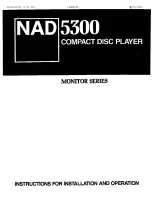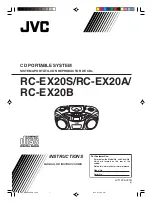
■
ADJUSTING THE DEPTH OF CUT SCALE
For safe operation of your planer, it is very important that the
depth of cut scale is read accurately. To adjust the depth of cut
scale, follow the steps outlined below:
1)
Try to feed a board for planing.
2)
Compare the measured thickness of the board to the
reading on the depth of cut scale.
3)
If the reading on the depth of cut scale is incorrect, loosen
the screw which tightens the plastic pointer and adjust
accordingly.
4)
When you have properly adjusted the depth of cut scale,
test your reading by planing a piece of scrap lumber. After
planing, measure the planed thickness and double check
it against the scale reading. The two measurements
should be the same, re-adjust your depth of cut scale to
read the planed thickness if necessary.
■
REMOVING THE PLANER BLADES
To remove the planer blades, follow the steps outlined below:
1) Remove the chip guard by removing
the wing nuts shown in figure 4.
2) Loosen the lock bar (B) and blade by
turning the lock screws (A)
clockwise. The blades are spring
loaded, and will push out when the
assembly is loosened. (Fig. 5A)
3) Take out the blade (C), and then the
blade lock bar (B).
■
INSTALLING THE PLANING BLADES
To remove the planer blades, follow the steps outlined below:
1) Remove the blades according to the
instructions for “ REMOVING THE
PLANER BLADES”
2) Fit the blade lock bar (B) into the slot
on the cutterhead.
3) Fit the blade into the slot on the
cutterhead, and tighten the lockbar
blade assembly by turning the
screws counter clockwise. Make
sure the blade is facing the correct
direction.
4) Set the blade heights according to
the instructions on the following
page. The blade height must be
reset every time the blades are taken
out for any reason.
5) Be sure to replace the chip guard
after blades are installed.
Cutterhead
Raising
Hand Crank
Depth Scale
Fig. 3
Plastic Pointer
WARNING: Unplug your planer from the power
source before removing the planer blades.
WARNING: Unplug your planer from the power
source before removing the planer blades.
Page 5
Fig. 4
Fig. 5
Chip
Deflector
Safety Guard
Screws
Screws
Fig. 5A





























